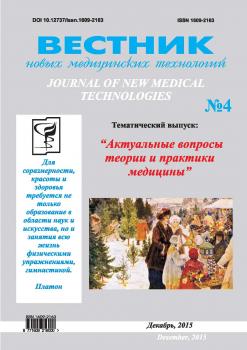Progress in the field of neurosurgery and the possibility of total removal of the majority of intramedullary tumors leads to the question about maximum security functions of the spinal cord. The invention and implementation of intra-operative neuro-physiological monitoring (IOM) provides real-time to assess the impact of surgical procedures on the pathways of the spinal cord. Effective and informed monitoring includes an assessment of motor and sensitive ways to complete information about the functions of the spinal cord. Identifying predictors of favorable functional outcome and algorithm development monitoring allows the authors to modify neurosurgical tactics and improve the patient´s quality of life after surgery. This article describes all the methods IOM and physiological factors affecting the monitoring of responses. The authors review data on the effects of different anesthetics on the ability of neurons to conduct impulses and the most favorable combinations of drugs. It is proved that the IOM is effective as predictors of high risk of postoperative complications (4 studies class I and 7 studies of class II). It is important to consider the factors such as experience neurophysiologist and his ability to interpret data, as well as experience of the surgeon in using these data, the actions of the anesthesiologist - the whole process of interaction affects the final outcome of the operation.
intramedullary spinal cord tumors, intra-operative neuro-physiological monitoring, somatosensory evoked potentials, motor evoked potent
1. Gnezditskiy V.V., Korepina O.S. Atlas po vyzvannym potentsialam mozga. Ivanovo: Izd.-poligr. Kompleks «PresSto», 2011.
2. Zherebtsova V.A., Indyukhin A.A., Indyukhin A.F., Sokolov E.M., Khadartsev A.A. Sposob registratsii dlinno-latentnogo vyzvannogo potentsiala mozga pri elektrokozhnoy stimulyatsii i ustroystvo dlya ego osushchestvleniya. Patent № 2199947, Byul. № 7 ot 10.03.2003
3. Zherebtsova V.A., Indyukhin A.F., Sokolov E.M., Khadartsev A.A., Morozov V.I., Vasil´ev V.P. Sposob diagnostiki dlinnolatentnogo vyzvannogo potentsialom mozga i ustroystvo dlya ego osushchestvleniya. Patent № 2240036, Byul. № 32 ot 20.11.2004.
4. «Threshold level» multiple transcranial elec-trical stimulation of motor cortex for intraoperative monitoring of spinal motor tracts: description of method and comparison to somatosensory evoked potential monitoring / Calancie B., Harris W., Broton JG., [et al.]. J. Neurosurg. 1998. V. 88. P. 457-470.
5. Chen Z. The effects of isoflurane and propofol on intraoperative neurophysiological monitoring during spinal surgery. J.Clin. Monit. Comput. 2004. №18(4). R. 303-308.
6. Deletis V., Francesco Sala: Intraoperative neu-rophysiological monitoring of the spinal cord during spinal cord and spine surgery: A review focus on the corticospinal tracts. Clinical Neurophysiology. 2008. V. 119. P. 248-264.
7. Deletis V., Isgum V., Amassian VE. Neurophy-siological mechanisms underlying motor evoked potentials in anesthetized humans. Part 1. Recovery time of corticospinal tract direct waves elicited by pairs of transcranial electrical stimuli. Clin. Neurophysiol. 2001. V. 112. P. 438-444.
8. Fennelly M.E., Taylor B.A., Heetreed M. Anaes-thesia and the motor evoked potential, In: Jones SJ. Handbook of spinal cord monitoring, Dordrecht: Kluwer Academic Publishers, 1993.
9. Harrington P.R. Treatment of scoliosis. Correc-tion and internal fixation by spine instrumentation. J. Bone Joint Surg. 1962. 44A. P. 591-610.
10. Jellenek D., Jewkes D., Symon L. Noninvasive intraoperative monitoring of motor evoked potentials, Neurosurgery, 1991.
11. Kearse Jr LA., Lopez-Bresnahan M, McPeck K., Tambe V. Loss of somatosensory evoked potentials during intramedullary spinal cord surgery predicts postoperative neurologic deficits in motor functions. J. Clin. Anesth. 1993. №5. P. 392-398.
12. Kelly D.L., Goldring S., O´Leary J. Averaged evoked somatosensory responses from exposed cortex. Arch. Neurol. 1965. №13. R. 1-9.
13. Kothbauer K., Deletis V., Epstein FJ. Motor evoked potential monitoring for intramedullary spinal cord tumor surgery: correlation of clinical and neuro-physiological data in a series of 100 consecutive proce-dures. Neurosurg Focus. 1998. №4(5). R. 1-9.
14. Motor evoked potentials from transcranial sti-mulation of the motor cortex in humans / Levy W.J., York D.H., McCaffrey M. [et al.]// Neurosurgery. 1984. №15. R. 287-302.
15. MacDonald D. Intraoperative motor evoked potential monitoring: overview and update. J of Clin. Monit and Comp. 2006. №20. P. 347-377.
16. McCormick P.C., Torres R., Post K.D. Intrame-dullary ependymoma of the spinal cord. J. Neurosurg. 1990. 72. P. 525-532.
17. Merton P.A., Morton H.B. Stimulation of the cerebral cortex in the intact human subject. Nature, 1980.
18. Moller A. Intraoperative neurophysiological monitoring. Springer, Third Edition, 2011. P. 283-287.
19. The role of motor evoked potentials during surgery for intramedullary spinal cord tumors / Moro-ta N., Deletis V.,Constantini S., [et al.] . Neurosurgery. 1997. 41. R. 1327-1336.
20. Evidence-based guideline update: Intraopera-tive spinal monitoring with somatosensory and tran-scranial electrical motor evoked potentials / Nuwer M.R., Emerson R.G., Galloway G. [et al.] . In: Neurolo-gy guidelines, special addition 2012; (Report of the The-rapeutics and Technology Assessment Subcommittee of the AAN and the AACNS): 585-589.
21. Pelosi L., Stevenson M., Hobbs GJ. Intraopera-tive motor evoked potentials to transcranial electrical stimulation during two anaesthetic regimens. Clin. Neurophysiol. 2001. 112. R. 1076-1087.
22. Report of Morbidity and Mortality Committee. Scoliosis Research Society Annual Meeting, September 1974.
23. Intraoperative motor evoked potentials moni-toring improves outcome after surgery of intramedul-lary spinal cord tumor: a historical control study in 50 patients / Sala F., Palandri G., Basso E. [et al.] . Neuro-surgery. 2006. 58. R. 1129-1143.
24. Sloan TB. Intraoperative neurophysiology and anesthesia management. In: Deletis V., Shils J. (eds), Neurophysiology in neurosurgery. Academic Press, Elsevier Science. 2002. 1. R. 451-474.
25. Tamaki T., Kubota S. History of the develop-ment of intraoperative spinal cord monitoring. J. Eur. Spine. 2007. Suppl 2. P.140-146.
26. Effects of four intravenous anesthetic agents on motor evoked potentials elicited by magnetic transcranial stimulation / Taniguchi M., Nadstawek J., Langenbach U. [et al.]. Neurosurgery. 1993. 33. P. 407-415.
27. Vauzelle C., Stagnara P., Jouvinroux P. Func-tional monitoring of spinal cord activity during spinal surgery. Clin. Orthop. 1973. 93. 173-178.





